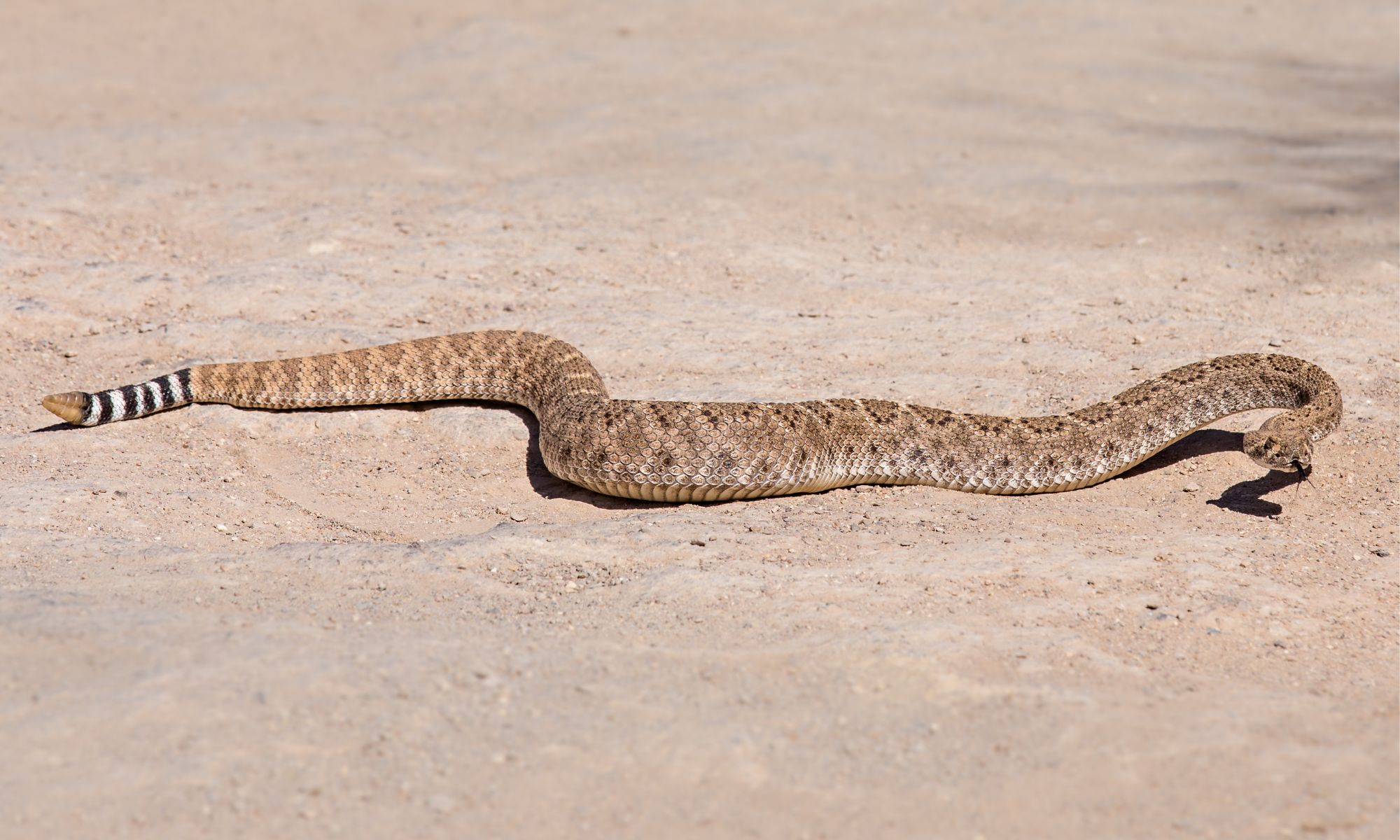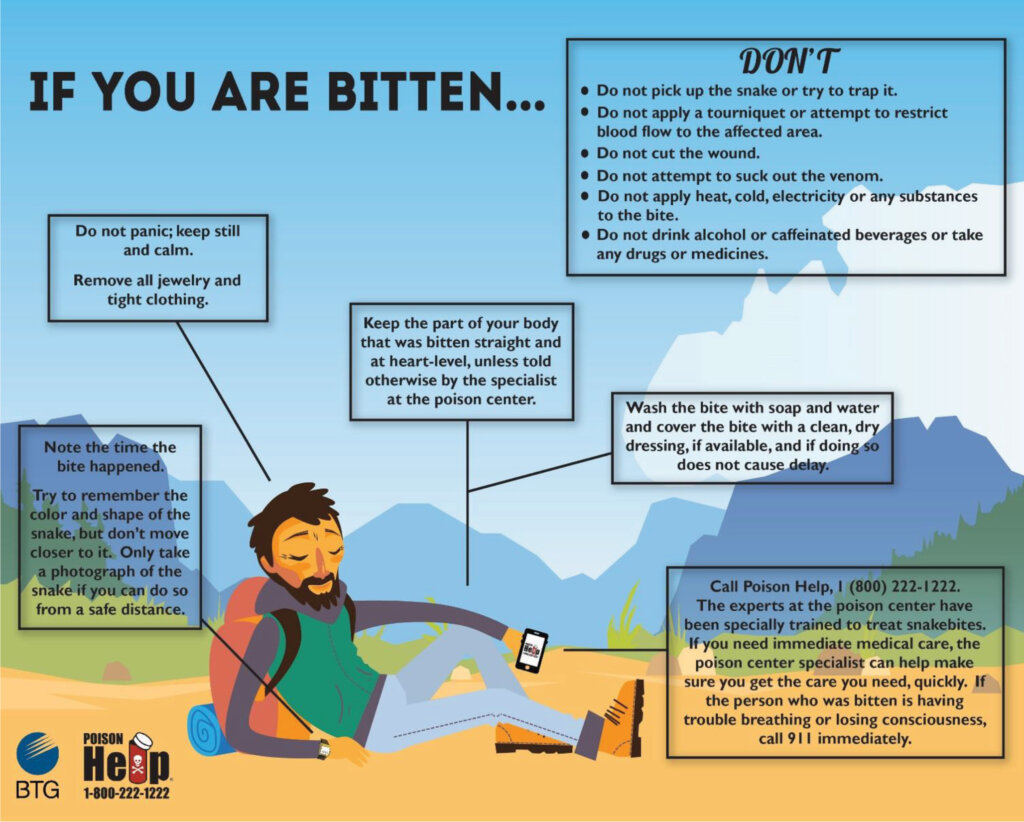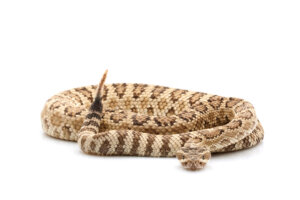
11 Jul Don’t let snakes ruin your summer fun!

Summer is in full swing, and many of us are taking advantage of the warmer weather by enjoying our favorite outdoor activities. Whether you’re hiking, biking, camping, swimming, or simply enjoying the sunshine, Harney District Hospital is reminding you to keep an eye (and an ear) out for snakes!
According to the Oregon Department of Fish & Wildlife, Oregon is home to 15 native species of snakes, but only one — the Western Rattlesnake — has poisonous venom that’s dangerous to humans. Western Rattlesnakes are known for their broad/triangular heads (which are much wider than their necks), vertical pupils, and the rattles on the end of their tails. Mature Western Rattlesnakes average between 18-36 inches long and vary in color from olive to brown to gray. Some Western Rattlesnakes have black and white crossbars on their tails. Oregon is home to two sub-species of Western Rattlesnakes: The Northern Pacific Rattlesnake (which inhabits Southwestern Oregon, parts of the Willamette Valley, and the Columbia Plateau) and the Great Basin Rattlesnake (which can be found in Southcentral Oregon and here in Southeastern Oregon).
Rattlesnakes don’t view humans as prey and will only bite if they feel threatened. Most snakebites occur when people frighten snakes by surprising or accidentally stepping on them. Rattlesnakes use their hollow fangs to inject venom, which is contained in two glands inside their heads. Each gland is connected to a fang and controlled by a sphincter that allows the snake to bite without releasing venom (dry bite) or release measured amounts of venom through one or both fangs (wet bite). If you are bitten by a snake, it’s best to assume that venom has been delivered and seek medical care!

Harney County is home to the Great Basin Rattlesnake. A sub-species of the Western Rattlesnake, these snakes are known for their broad/triangular heads, vertical pupils, rattles, and poisonous venom! The good news is that Harney District Hospital carries ANAVIP®, an anti-venom that’s used to treat snake bites.
Harney District Hospital is stocked with ANAVIP®, a snake anti-venom that’s used to treat bites from rattlesnakes, cottonmouths, and copperheads. The hospital’s medical professionals will examine your bite and determine whether treatment with anti-venom is appropriate.
Here are some additional tips from Oregon Health & Science University (OHSU) for responding to snakebites:
If you are bitten by a snake:
• Don’t panic. Keep still and be calm.
• Call Poison Help at 1-800-222-1222. The experts at the poison center have been specifically trained to treat snakebites and can advise you based on your specific situation. IF YOU ARE HAVING TROUBLE BREATHING OR LOSING CONSCIOUSNESS, CALL 911 IMMEDIATELY!
• If you are in a remote location and do not have access to mobile phone service, ask someone to drive you to the nearest emergency medical facility. Only drive yourself as a last resort!
• Keep the part of your body that was bitten straight or at heart-level (unless told otherwise by the specialist at the poison center).
• Remove all jewelry and tight clothing.
• Wash the bite with soap and water and cover it with a clean, dry dressing (if available and if doing so doesn’t cause delay).
• Try to remember the color and shape of the snake, but don’t move closer to it. Having a description of the snake will help your healthcare providers determine what treatment is right for you. Only photograph the snake if you can do so from a safe distance. DO NOT TOUCH OR HANDLE THE SNAKE!
• Note the time that the bite occurred.
DO NOT:
• pick up or attempt to trap or kill the snake;
• apply a tourniquet or attempt to restrict blood flow to the affected area;
• cut the wound;
• attempt to suck out the venom;
• apply heat, cold, electricity, or any substances to the wound;
• drink alcohol or caffeinated beverages or take any drugs or medicines.
Tips for preventing snakebites:
Of course, it’s best to prevent snake bites, whenever possible. Here are some snakebite-prevention tips from OHSU:
• Avoid surprise encounters: Snakes tend to be active at night and in warm weather. They also like to hide in tall grass, brush, and piles of rocks, leaves, or wood. Avoid climbing on rocks or wood piles, where snakes might be hiding. When moving through tall grass or weeds, poke the ground in front of you with a long stick to scare away snakes. Watch where you step and sit outdoors, and shine a flashlight on your path when walking outside at night.
• Wear protective clothing: Wear loose/long pants and high/thick leather or rubber boots when spending time in places where snakes may be hiding. Wear leather gloves when handling brush and debris.
• Never touch or handle a snake, even if you think it’s dead or nonvenomous. Recently killed snakes may still bite by reflex. There have been cases of detached snake heads being able to bite, reflexively.
• Bring a partner: If you are planning to spend time in a snake-prone area, it’s best to bring someone who can help if you are bitten by a snake (or have another emergency). If you must go alone, bring a fully charged mobile phone and stay in areas where your phone gets signal.
Following these simple steps can help prevent snakes from ruining your summer fun.


No Comments